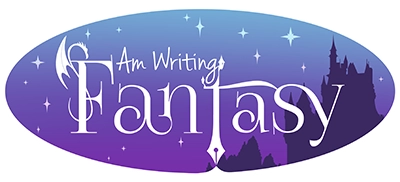What You'll Learn
A review I read got me thinking about this question and I wanted to pose it to you because I think it is an interesting one.
Do characters need to progress in the course of a novel?
The review (and it was actually a good one. But no, I’m not linking up to it or even saying if it were my books or a friend’s!) listed out a few kudos and problems, including: most characters developed and grew during the course of the novel in question (kudo), one character did not (problem), and one or two characters barely grew (because they were already high achieving, self-aware), which was listed as a disappointment. In fact, the one character that didn’t grow was referred to as having regressed almost completely from all the development he’d done in the previous novel.
Does that not get your mind whirling?
It does mine. I love pulling apart the mechanics of a novel, comparing it to human psychology, and maybe even testing a few perceptions – though when it comes to writing traditions that last one can get your burnt!
Let’s start with definitions. Wikipedia defines a character arc this way:
“As opposed to the plotline of a story, a character arc, or transformation, or inner journey is a description of what happens to the inside of a character over the course of the story.”
This doesn’t necessarily equate to growth, but the word “transformation” does give that impression. So where does the idea that a character arc means growth come from?
Well we are talking about writing. The rules here are that all the plots and subplots are nicely tied up by the end of the novel or series AND that there is a meaning to it all. We can’t exactly ask that of everyday life! So I think deep down we all hope for a positive transformative journey for a character. In other words, we hope for a Heroic Character Arc.
Lavanya over at Booksoarus does a great job at outlining the 12 steps to a heroic character arc. I highly recommend checking it out if you aren’t familiar with this one. Tolkien didn’t invent the heroic character arc, but he did make it a cornerstone of fantasy. This is a naive hobbit leaving the shire to save the world. This is a princess without a throne who loses the little she has, yet hatches dragons out of the ashes and strives to recapture her throne.
But is it the only character arc? Do all the characters survive in George RR Martin’s Song of Ice and Fire? 😉
Not all characters are heroes. Veronica Sicoe wrote a great blog post that defines three character arcs: change, growth (including shift), and fall. I mean it; that post is worth reading because she even breaks it down into how character arcs work with the story structure at the end! Go take a peak.
I also love this post by James R. Hull. He discusses non-transformative character arcs, and addresses the perception that a character MUST grow by pointing out popular novels where the character doesn’t achieve that. Go James!
So there are other character arcs out there, and they are used, but the heroic arc is the most prevalent in fantasy. The question may now be why use anything else?
Why have characters who aren’t white males? That may be blunt, but I am serious. Diversity of characters, thought, and experience mean so much to readers who span a globe. Want to read that first hand, check out this great website and post at AfroFantasy! (Plus I absolutely love the character picture on the page I linked to!!) Diversity matters and readers pay attention! But goodness knows we indie authors love to create new mixes based on the genre mash-ups rolling out.
Not white … not sure if they have a gender!
And I admit part of what got me originally thinking about non-heroic character arcs was a friend’s post asking why we don’t see more anxiety and mental illness in our fantasy characters?
PTSD as well as bipolar symptoms really leapt to mind at that question because both are or have been a part of my life. And what a deep and complex character adding those attributes create! What emotions would a warrior face after a monumental battle, especially if they lost friends? Would you like to read about the farm girl who became a fighter who became queen and lead the way forward without missing a step, or the farm boy who became a warrior who regretted the loss of a companion and that experience tempered his vision of epic wars and conquest, possibly for good (great mediator) or ill (doesn’t react to potential threats forcefully enough)?
But this isn’t the only type of challenge to throw at a character, protagonist or antagonist. Because isn’t the villain a character who fails in meeting the goals of their arc? No one said arcs are limited to just main character protagonists. I’m actually very tempted to use a character arc that slowly changes a hero to a villain through a failed arc (not saying if that is a spoiler for my next series or not!).
And a shift arc is very suggestive of the reviewer’s comment that one character hadn’t developed. Maybe they shifted perceptions or grew in other ways? Maybe a character can be at a peak and then cycle into a shift or fail in the next book?
Yikes! Now we are talking about a series.
As if this wasn’t complicated enough, discussing a series makes character arcs even more of a challenge. Can/should a character arc change over the course of a series as well as the course of just one book? I think so and have done this in a series.
But which arc is the primary?
I don’t think that matters so much as long as the arc in each novel is complete. So the character faces challenges and either has learned enough to evolve or change perspectives. Or they haven’t learned their lessons (or what they face is beyond what they can overcome or acknowledge) and they fail.
One last thought on all of this talk of arcs is that it makes it seem like a smooth progression, some lovely rainbow like arch guiding the character along. Again why? Plots have hurdles, lulls, setbacks, and climaxes. Why not throw that into your character arc too?
What do you think? Should fantasy dare to accept something other than a heroic character arc? Can you think of a fantasy book that does?










Hello, Autumn! Great post.
Orson Scott Card, in his book “How to Write Science Fiction and Fantasy”, identifies 4 different story types within the genre: Milieu, Idea, Character, and Event. In milieu stories, the whole point is for the reader to see the strange new world created by the author (think “Gulliver’s Travels”). Idea stories are about the process of finding out information the characters need to know (“The Martian”). Character stories are about the transformation of a character; and Event stories are about putting the world back in order.
A little out of date, perhaps, but I think his system gives us a window into the history of the genre, which traditionally has emphasized factors other than character development. Even Lord of the Rings would best be defined as an Event story. Frodo is important, but the story is not really “about” him; it’s about defeating a dark power (Sauron) that threatens to upset the natural order of Middle Earth. Though most stories have some degree of character development in them, it’s not necessarily the most important aspect of the story. And many stories (e.g., Indiana Jones) get by just fine without it.
Me, I’m a character development person, both when I read and when I write. Thanks so much for all your cross references here. You’ve given me some to look forward to for the weekend!
Hi Karin!
I’m so glad you enjoyed the post. Great references, both Orson Scott Card’s take on story types and some examples! Enjoy the references. It was so much fun writing this article and reading other views, ideas, and perceptions. I couldn’t put them all in here or the post would have read like a footnote of other articles to read with a few sentences thrown in. lol.
I love character development too, but I love the variety of types of character development. Not everyone can be developing/growing, or we wouldn’t have mentors and guides, right? Or villains, or redemption… 😉
PTSD is, for certain, a viable fantasy characteristic, as are most mental conditions, especially narcissism… Anything possible in the real world has to be possible, and more so in fantasy, which is why A Song of Fire and Ice is so popular, even with people who don’t normally do fantasy, because good doesn’t come out on top always (or even at all), and ‘evil’ doesn’t mean an antagonist is inherently unlikeable, (like the Hound, or Verys(one of my favourites!), or even Little Finger).
The trauma trail is virtually limitless vein for fantasy Cinderellas, whatever their gender or species. Abuse of one kind or another always works in fantasy which is why we still re-work incestuous Arthurian legends and return, again and again to genocide in all it’s aspects (‘Are Tolkien’s High Elves fascist because of their implacable abhorrence of Orcs and other Mortals’ – discuss…) and other nassssty aspects of being human.
The character that doesn’t change in some way is a boring character, however they fit into the equation and why, today, Tolkien doesn’t always work for new readers, or movie-goers, without some ‘relatable’ tweaking where you can’t rely of CGI alone, because some characters just don’t ‘move’ too much or just plain don’t get finished because it’s enough that they exist (Sauron, like Darth Vader, is a far better character in the much earlier Simarillion story arcs where he’s not completely evil, or was locked out of corporeal form). Ditto any Mary Sue/Gary Stew character you care to mention, because you can’t make them do too much that’s interesting once you get past making them ‘pretty much perfect in every single way’ – unless they’re Mary Poppins with a massive super-ego 😛
Thanks for all the links Autumn – we have to keep Fantasy as real as we can! 😀
Hi Jan!
Great additions to the list of types of character and the arcs they lead! I hadn’t thought of it that way, but perhaps needing a more multidimensional character is exactly why so many classic legends (that still draw us in for the deeper story) are being reworked. I admit I liked Tolkien, but didn’t love it. And I think you are correct – it was because the characters didn’t work for me.
I love the more nuanced modern characters, including George RR Martin’s (even if he still kills off too many for me!). Thank you for the insightful comment and I’m so glad you liked the post, Jan! Yes, we must keep fantasy as real as we can! 🙂
Interesting article. Thought provoking. Why MUST everything make sense in the end? My protagonist is headed toward the transformation to villain already. Will he transform back?
His best buddy is somewhat villainous already and is transforming toward hero. ( probably not all the way though)
Hi D.E.!
Oh I love the sound of your two character arcs! Talk about adding tension as well as transformation (both positive and negative) to a story. I already want to know if you’ll pit the two (former?) friends against each other or if they’ll try to avoid a direct confrontation, or … Hah, I think you have the makings of a fantastic story if I know nothing else and you’ve caught my imagination. Good job and best of luck with the writing! 🙂